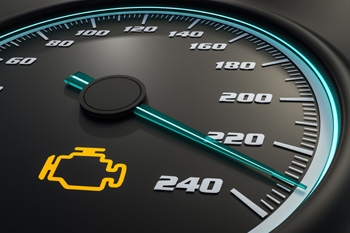These are the most common signs of a failing master cylinder:
Brake pedal sinks to the floor: If there are no external leaks, yet the brake pedal goes to the floor, the master cylinder is probably leaking internally. The pedal may also feel spongy or unresponsive instead.
Dragging brakes: A master cylinder that does not release fully can result in the brakes feeling like they are sticking or dragging while you drive.
Fluid leaks: A cracked or damaged master cylinder bore can result in external fluid leaks. Leaks may also develop around the outlet ports, reservoir seals and bore end seal.
Brake warning light: If the master cylinder is leaking, it can cause a low brake fluid level, triggering the brake warning light.
How to fix the problem
Before spending time and money to replace the master cylinder, a thorough diagnosis should be performed. A professional will inspect the entire brake system checking for leaks and damage.
Low brake fluid levels in the master cylinder reservoir could indicate worn brake pads. As brake pads wear, it is normal for brake fluid to be displaced to the brake calipers, causing the low levels.
Problems elsewhere in the brake system can cause symptoms similar to a defective brake master cylinder, including stuck calipers and ABS valve bodies. Have the shop inspect the entire brake system to verify that the problem is specific to the master cylinder.
A faulty master cylinder should be replaced a soon as possible. The procedure is rather involved and requires bleeding the brake system of air afterward. It should be left to a pro. Also, flushing brake fluid every two years can extend the life of your brake master cylinder.
Lim’s Auto Body is a full service auto body and mechanical repair shop locally owned and operated in Largo, Florida. For more information, go to our web site www.limsautobody.com or call (727) 422-3232.

 never know if it’s something minor or a real problem. Every year our cars are getting more powerful, more miles per gallon, and better technology. Under the skin, to give you all this, your car is also getting more complicated. Where old electrical and mechanical systems used to move you, new computer systems are faster and more accurate than ever before.
never know if it’s something minor or a real problem. Every year our cars are getting more powerful, more miles per gallon, and better technology. Under the skin, to give you all this, your car is also getting more complicated. Where old electrical and mechanical systems used to move you, new computer systems are faster and more accurate than ever before.